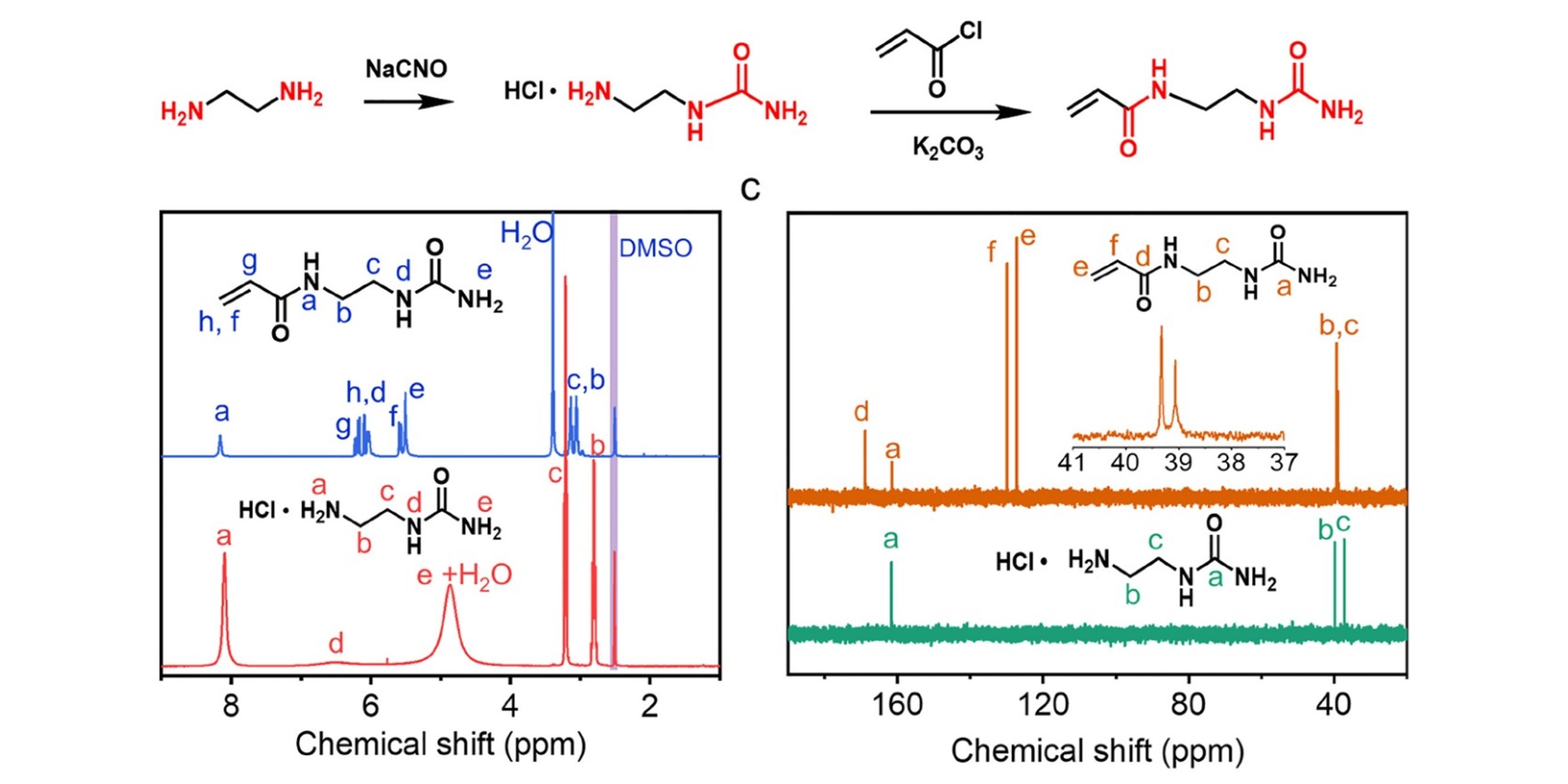Tailor-made high elasticity and low-hysteresis hydrogels based on asymmetric H-bonding crosslinking...
Citation
Xiaofang Shi*, Nan Shi, Miaomiao Dang, Chengyu Ji, Yingjie Li, Peiyi Wu*, and Zhiguo Hu*. Tailor-made high elasticity and low-hysteresis hydrogels based on asymmetric H-bonding crosslinking for wearable applications. Sci. China Chem. 2025, 68, 1117-1125.
Abatract
The conventional method of fabricating hydrogels constantly confronts the conflict between elasticity and toughness, limiting their repetitive application. Achieving the desired elasticity through a simple and low-cost approach is a significant challenge for hydrogels, particularly through rational molecular design. Here, low-hysteresis and high-toughness hydrogels are developed from the design of a new feature monomer, N-acryloylethylsemicarbazide (NACE). Based on a concept of “asymmetric H-bonding design”, the unique double and triple H-bonding of NACE can result in a novel asymmetric crosslinking polymer with alternating strong and weak H-bonding regions. The NACE is copolymerized with acrylamide (AM) to regulate the mechanical properties of hydrogel via H-bonding density. The P(NACE-AM) ionic hydrogels are obtained simply and rapidly via one-step photopolymerization without a chemical cross-linking agent. The P(NACE-AM) hydrogels combine superb mechanical elasticity and toughness, and excellent ionic conductivity, showing great potential as durable ionic conductive devices for wearable utilization.


